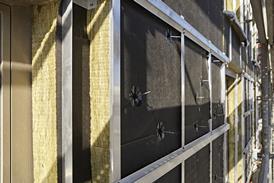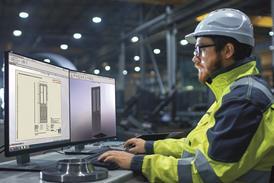That sounds like a risky prospect. But it's all part of a system which the firm invented to test out innovations. It's called PRIME (Promoting Realistic Innovation Methods Expertise) and Laing thinks it's so good, it's trademarked it. PRIME is a five-step assessment tool aimed to demonstrate internally and to its social housing clients that a new product works.
John Laing Partnership set up PRIME over two years ago. "Every magazine you looked in there were innovations," says development director Peter Marten. "But anything can be made to look desirable. There was nowhere you could go to find out what they were really like in use."
So far around 45 new products have had the full PRIME treatment, with hundreds failing along the way.
The first step is to select a likely new system or product. The PRIME committee does this, with emphasis on those that use offsite, improve quality or efficiency, need less skilled labour, or are less susceptible to weather.
Second, the product is scored on paper under eight headings: affordability, productivity, sustainability, buildability, predictability, durability, marketability, applicability. It has to get 150 out of 200 to go on. Third, the PRIME group consults all its staff to get feedback through noticeboards and the intranet.
Next comes the site test. Which products trial where depends on the development and on the client. Many housing associations, for example, won't sanction timber frame because they need a more robust construction to take the strain of their tenants.
And housing associations don't want to pay more for offsite than for traditional methods. The 33 bathroom pods from Gateway Fabrications which are going into some of the apartments cost more than traditional methods. 50 bathrooms would have been needed to come in at the same price. John Laing Partnership is taking the financial hit. "It was a commercial decision," says Marten. "Because we could see in theory that there would be significant commercial benefits."
On site Martyn Fennell, John Laing Partnership's area building manager and senior construction manager Keith Hill measure up how the products perform. "It may be a fantastic piece of innovation but you are on a dirty building site working with dirty builders," says Fennell, who is also on the PRIME steering committee. So for example, although H+H Celcon's Jamera aircrete blocks can be cleanly cut and the end pieces reused, they are more likely to be tossed aside in the interest of speed.
Other problems occur with sequencing, interfaces and with details. How can tenants choose their own colour scheme for the bathroom if the lead time for the pods starts before all tenants have been allocated?
Some things you just don't realise until you have to do them. At the paper stage, no one twigged that a special metal cage would be necessary to lift the pods into place because attaching hooks to the timber frame would have wrecked the finishes which is the whole point of them.
"From my point of view as a constructor it's good to get involved early doors and put a practical slant on it," says Fennell.
The final stage of prime will be to go through the assessment again with the benefit of the practical experience. Scores always drop at this point, says Marten. If an innovation still gets more than 150, it can be considered for future jobs.
Source
Construction Manager
Postscript
Enquiry number 201 (Gateway Fabrications)
Enquiry number 202 (H+H Celcon)





















No comments yet